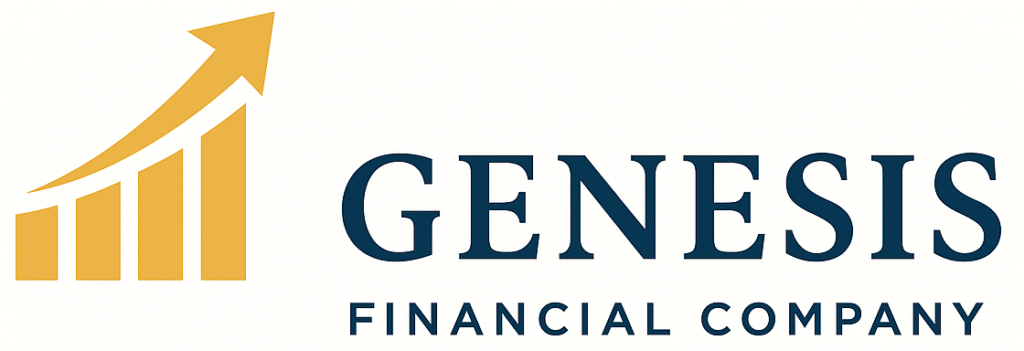Retirement planning is the process of planning for one’s retirement, including saving and investing for retirement, estimating future expenses and income, and planning for other retirement-related goals. It is important to plan for retirement early in life, as it can help ensure that one has enough money to live comfortably during retirement.


An IRA (Individual Retirement Account) is a type of savings account that provides tax benefits for retirement savings in the United States. There are two main types of IRAs: Traditional and Roth. Contributions to a Traditional IRA may be tax-deductible, and the money grows tax-deferred, but withdrawals in retirement are taxed as income. Contributions to a Roth IRA are made with after-tax dollars, but qualified withdrawals in retirement are tax-free. IRAs have contribution limits and restrictions on withdrawals before age 59 1/2 to encourage long-term savings for retirement.
For tax year 2025, the total you can contribute to all your IRAs (Traditional + Roth) is $7,000, or $8,000 if you’re age 50 or older (includes the $1,000 catch-up). Income limits can affect Roth IRA eligibility and whether Traditional IRA contributions are deductible. For 2025, Roth IRA full contributions are allowed if MAGI is under $150,000 (single/HOH) or under $236,000 (married filing jointly), with phase-outs at $150,000–$165,000 and $236,000–$246,000, respectively. Traditional IRA deduction phase-outs (when covered by a workplace plan) are $79,000–$89,000 (single/HOH) and $126,000–$146,000 (MFJ for the covered spouse); if you’re not covered but your spouse is, the MFJ phase-out is $236,000–$246,000. Married filing separately phase-outs remain $0–$10,000. IRS
2026 IRA limits haven’t been announced as of August 25, 2025; the IRS typically releases next-year retirement limits in October–November. Milliman
As always, specific deductibility and Roth eligibility depend on your filing status and income—consult your tax professional for personalized advice.
It’s important to note that there are contribution limits and eligibility requirements for IRAs, so make sure to research and understand these before you start the funding process.
You can take money from an IRA at any time. If you’re under age 59½, most withdrawals are taxable and also hit with a 10% early-distribution penalty. A higher 25% penalty applies to SIMPLE IRAs if you withdraw within the first two years of participating in the plan. Exceptions can waive the penalty (but not ordinary income tax) for situations such as death, disability, unreimbursed medical expenses above 7.5% of AGI, health-insurance premiums while unemployed (IRA only), higher-education expenses (IRA only), a first-time home purchase up to $10,000 (IRA only), IRS levy, substantially equal periodic payments (72(t)), qualified disaster relief (up to $22,000), domestic-abuse distributions (lesser of $10,000 or 50% of the account), and $1,000 “emergency personal expense” distributions (with repayment/limitations). If an exception applies but your 1099-R doesn’t show it, you can claim it on Form 5329. IRS
New for this period: effective 2024, the IRS finalized guidance for the $1,000 emergency and domestic-abusepenalty exceptions noted above. Effective late 2025/2026, SECURE 2.0 §334 allows penalty-free distributions of up to $2,500 per year from retirement accounts (including IRAs) to pay premiums for certain certified long-term-care insurance (taxes may still apply); details are being implemented by Treasury/IRS. IRSGroom Law GroupThe Tax Adviser
Special Roth IRA note: your regular Roth contributions (basis) can be withdrawn anytime tax- and penalty-free. Earnings are tax-/penalty-free only when the withdrawal is a qualified distribution (the 5-year rule plus an event like age 59½, death, disability, or first-home up to $10,000). Amounts converted to Roth generally have their own 5-year clock for the 10% penalty if taken before 59½. See the IRS ordering rules in Pub. 590-B. IRS
Rules can be nuanced (plan vs. IRA differences, state tax, documentation). For specific planning and to minimize taxes/penalties, consider consulting your tax professional. IRS
It is difficult to determine the exact amount you will earn in an IRA if it grows at 7% per year for 25 years, as it depends on the starting balance and contributions made over the 25-year period. However, you can use the formula for compound interest to estimate the future value of your IRA. The formula is:
FV = PV * (1 + r/n)^(nt)
Where:
PV = the present value or starting balance of the IRA r = the annual interest rate (7%) n = the number of times the interest is compounded per year t = the number of years (25)
Note that this is just an estimate and actual results may differ due to various factors such as taxes, fees, and inflation.
To calculate the total amount you would have in an IRA after 25 years with an annual contribution of $6,500 and a 7% interest rate, you can use the formula:
A = P * (1 + r/n)^(nt)
Where: A is the end amount P is the principal amount (the amount you initially invest) r is the interest rate (expressed as a decimal) n is the number of times interest is compounded per year t is the number of years
In this case: P = 6500 * 25 = $162,500 (total contribution over 25 years) r = 0.07 n = 1 (once per year) t = 25
Plugging these values into the formula, you get:
A = $162,500 * (1 + 0.07/1)^(1 * 25) = $657,914.07
So, after 25 years of contributing $6,500 annually and with a 7% interest rate, you would have approximately $657,914.07.
Keeping the Match after withdrawing money from your funds depends on how long you’ve had the contribution in your account and the total balance of your account.
If you’ve held your eligible contributions for at least 5 full years, the Match is yours to keep. If you withdraw money earlier than 5 years, and your remaining balance stays at or above your contribution amount that earned the Match, it’s yours to keep.
For example, if you contributed $1,000 and earned a $10 Match on June 1, 2025, you can withdraw all of it on or after June 1, 2030.
If you choose to withdraw money from your IRA or brokerage before June 1, 2030, you’ll keep the $10 Match if the remaining balance is at least $1,000 (which represents your eligible contribution amount that earned the $10 Match).
The following shows some more examples of the Early Match Removal Fee:
| Contribution | Match | Withdraw date | Account value | Withdraw amount | Remaining balance |
|---|---|---|---|---|---|
| $100,000 | $1000 | 5 or more years | $100,000 | -$80,000 | $20,000 |
| $100,000 | $200 | Less than 5 years | $100,000 | -$80,000 | $20,000 |
| $100,000 | $100 | Less than 5 years | $10,000 | -$90,000 | $10,000 |
| $100,000 | $150 | Less than 5 years | $15,000 | -$85,000 | $15,000 |
The IRA Match is treated as interest income in your IRA. We won’t deliver a 1099-INT due to the tax status of IRAs.
The match will be paid in US Dollars and sent to the account in cash after 5-10 days after the 5-year anniversary of the account.
Genesis must receive the paperwork through our platform to retitle the account. Once retitled, the account will remain active and will qualify for the match – If the account is closed before the 5-year time period – no monies will be paid on the match. If the account is split up into two or more accounts the original match will be split up based on the percentage that each account receives from the original deposit . For example, if two children inherit the account and want to create two accounts and split the deposit amount- each will receive 50% of the match at the anniversary of the original account – ‘The new accounts cannot be removed from the platform and will receive the transfers from the original account based on the split authorized . Each new account must authorize the match and sign new agreement paperwork to be eligible for the match.
All new accounts must be US citizens or corporations or trusts. All new accounts are covered for the match including IRAs, ( Roth and Traditional) , Individual accounts, trust accounts, corporate accounts, 529 plans, Coverdell plans, crypto accounts , state, and local government accounts. The account must be opened as a discretionary account with full authority for trades by the investment advisor . Individual Federal Treasury or Bond accounts do not qualify . There is a limitation of $2,000,000 that will be match or $20,000. All monies deposited on a match will be in US Dollars 7-10 days following the 5th year anniversary of the account.
Monies deposited into the account in the first 3 years ( up to the anniversary of the 3rd year) will also be matched with 1%. Any monies deposited in the last two years( 4 and 5) will not be matched. If the invested monies drop below the original or subsequent deposits by 20 or more percentage points the match will be at 80% and not lower. For example, the account loses 40% in 5 years( highly unlikely) the match will be 80% of the original deposits and not 60%. The account is guaranteed 80% match or more for the 5-year period.
Genesis has the right to close the account if the investments are deemed to be suspicious or laundering is suspected based on the information given to Genesis. All account owners must be USA citizens . Corporate accounts must be owned 100% by USA persons or USA entities.

